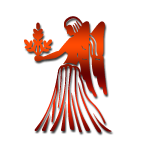Paid Services
The Hindu Scriptures

The teachings of the Hindu seers comprise the religion known as Hinduism or Hindu dharma. The holy texts that contain these teachings are known as the Shastras or scriptures.
Who is God? Where does He dwell? What does He look like? How are we related to Him? Why should we strive to realise Him? One may learn all these from the Scriptures. Moreover, the Scriptures teach us the methods of realising God. How are we to bring put the Divinity within us? What are the obstacles in the way? How are we to get over them? How should we behave? What acts are we to perform? What acts are we to refrain from? The Scriptures teach us all these as well.
The Hindus have been treading the path of religion for scores of centuries. Throughout this period countless earnest souls have reached the goal of religion by realising God. Many of these sages struck new paths leading to the same goal. Thus many methods of reaching perfection were discovered in this holy land by the Hindu sages. This is why the Hindu Scriptures., unlike the Scriptures of other religions, are many in number and variety. Moreover, the need of explaining religion to different classes of people gave rise to different classes of Shastras.
VEDAS
Of these many and diverse Hindu Scriptures, the oldest are the Vedas. The rest derive their origin from HINDUISM AT A GLANCE the Vedas. The Vedas are based on direct revelation. This is why they are called Shruti and their authority is unquestioned. All other Hindu Scriptures owe their authority to the Vedas and are known as Smriti.
The Vedas are older than any other Scripture of the world. Derived from the Sanskrit root vid which means 'to know', the word Veda came to mean 'knowledge of God\ As the creation is infinite and eternal, so is the knowledge of God infinite and eternal. Hence Veda, as knowledge of God, is inexhaustible and it exists eternally in the universe. Portions of this knowledge were discovered by hundreds of Hindu seers, and these we find recorded in what has come dowrn to us as the Vedic texts. The Hindu seers who discovered these are known as the Vedic rishis. It is worth noticing that in the Vedas more prominence is given to the truths discovered than to the discoverers. As a matter of fact many of the rishis did not care even to leave their names behind.
The Vedas are four in number. They are known as Rig-Veda, Sama-Veda, Yajur-Veda and Atharva- Veda. Each of these consists of two sections, namely, Samhita and Brahmana. The Samhita section contains hymns or mantras and the Brahmana section dwells on the meaning and 'use of these hymns.
The Hindus of yore would not worship gods and goddesses in images as we do now. Their worship consisted in reciting hymns (mantras) and offering oblations in sacred fire. This kind of worship is called yajna (sacrifice). The Brahmana sections of the Vedas describe the various kinds of yajna. The mantras contained in the Samhita sections have to be recited in course of the yajnas. From the Brahmana sections one may learn when, how and which mantras have to be recited during the performance of any yajna.
UPANISHADS
Certain portions of the Vedas are known as the Upanishads. They are also called Vedanta either because they occur towards the end of the Vedas or because they contain the cream or essence of the Vedas.
The bulk of the Vedas deals with details related to yajnas. The yajnas, that is, the ancient modes of worship, are nothing but ceremonials to be performed for purifying one's mind so that it may become fit for i receiving the knowledge of God. Hence this portion , of the Vedas concerned mainly with ceremonials (karma) is known as the Karma-kanda. On the other hand, the portions of the Vedas known as the Upanishads dwell primarily on the knowledge of God. This is why they constitute what is known as the Jnana-kanda of the Vedas.
Where and how does God exist ? How are man and the universe related to Him ? How and why- should one try to realise God ? What does exactly happen when one realises Him ? All these may be learnt from the Upanishads (or Vedanta). The Upanishads are many in number. Each of the four Vedas contains several Upanishads. Of these the following may be remembered : Isha, Kena, Katha, Prashna, Mundaka, Mandukya, Aitareya, Taittiriya, Chhandogya, Brihadaranyaka and Shwetashwatara.
SMRITIS
Some sages like Manu and Yajnavalkya compiled codes or manuals of Hindu life. These are known particularly as Smritis, though the term Smriti in a broader sense covers all Hindu Scriptures except the Vedas. From these Smritis by Manu, Yajnavalkya and other sages a Hindu learns how he has to spend his entire life. They instruct him as to how he should behave at different periods of his life (ashrama) and also what special duties are enjoined on him due to his birth in a particular social group (varna). These also describe all ceremonies connected with the domestic life of a Hindu. Moreover, these lay down domestic and social laws for the Hindus, and some of these are operative even under the British rule.
These Smritis, in short, prescribe certain acts and prohibit some others for a Hindu according to his birth and stage of life. Their sole object is to purify the mind gradually so that one may advance step by step towards perfection. They are no doubt based on the teachings of the Vedas. Yet it is to be noted that their injunctions (vidhi) and prohibitions (nishedha) are related to the particular social surroundings. As these surroundings of the Hindu society changed from time to time new Smritis had to be compiled by the sages of different ages and different parts of Hindusthan. Thus Raghunandana's Smriti is of a much later age than Manu's and it is applicable particularly to the Hindu society of Bengal. As our present-day society has changed considerably since the days of the last Smriti-maker, time is perhaps ripe for a fresh Smriti for the Hindus of our days.
DARSHANAS
The knowledge of God found in the Vedas gave rise to six different schools of thought. The sages Jaimini, Vyasa, Kapila, Patanjali, Gotama and Kanada introduced these different schools. Each of them wrote what is known as a Darshana ; and the six together are known as Shad-Darshana. Purva Mimansa, Uttara Mimansa (Vedanta), Sankhya, Yoga., Nyaya and Vaisheshika are the six Darshanas named in order of their authors mentioned above. Each of these is written in a peculiar style, namely, in aphorisms (sutras). The sutras of Sanskrit grammar remind one of the style of the Darshanas. These terse sutras of the Darshanas require explanation and these naturally gave rise, in the course of time, to a vast number of notes and commentaries on each of the Darshanas.
Of these Darshanas, the Purva Mimansa deals with the Karma-kanda of the Vedas and the Uttara Mimansa with the Jnana-kanda. The latter is derived directly from the Upanishads. This Darshana com- posed by the great sage Vyasa is also known as Vedanta Darshana or Brahma Sutras. This may be said to be one of the corner-stones of the Hindu religion. Great saints like Sri Shankaracharya and Sri Ramanujacharya in later days wrote brilliant commentaries on this Vedanta Darshana.
PURANAS
The Darshanas are no doubt very stiff. They are meant only for the learned few. For the common folk another class of Scriptures was brought out by the Hindu sages. These Scriptures are called the Puranas. Through these, religion is taught in a very easy and interesting way. The teachings are driven home through inspiring stories and parables. Moreover, glimpses of the ancient history of Hindusthan may bt had through the Puranas. We have eighteen Puranas in all. Of these the names of the following may be remembered: Vishnu Parana, Padma Pur ana, Vayu Purana, Skanda Purana, Agni Purana, Markandeya Purana and Bhagavata. A portion of the Markan- deya Purana is well known to all Hindus as Chandi. Worship of God as the Divine Mother is its theme. Chandi is read widely by the Hindus on sacred days.
RAMAYANA AND MAHABHARATA
Like the Puranas the Ramayana and the Mahabharata are two very popular and useful Scriptures of the Hindus. These are two epics (Mahakavya) pro- duced by the sages Valmiki and Vyasa respectively. They are classed as Itihasas (histories) and they give us interesting stories through which all the essential teachings of Hinduism are stamped on one's mind. These have been translated in many Indian vernaculars. It is through these translations that the bulk of the Hindus get acquainted with their religion.
GITA
A portion of the Mahabharata is known as the Gita. The Mahabharata describes the battle of Kurukshetra. The Kauravas and their cousins, the Pandavas, were the contending parties. Of the five Pandava princes, Arjuna was the third and the greatest hero. Bhagavan Sri Krishna chose to be his charioteer. Just on the eve of the great battle Bhagavan Sri Krishna explained the essentials of the Hindu religion to Arjuna. This sec- tion of the Mahabharata containing the teachings of Bhagavan Sri Krishna is known as Shrimad-Bhagavad Gita. Just as the Upanishads contain the cream of the Vedas, so does the Gita contain the cream of the Upanishads. Of all Hindu Scriptures the Gita has come to be by far the most popular one.
PRASTHANATRAYA
The Upanishads, the Vedanta Darshana and the Gita are grouped together and called the Prasthancttraya. These are looked upon as the basic Scriptures of the Hindu religion. They are highly authoritative. The founders of the important sects of Hinduism had to base their teachings on the Prasthanatraya. Only they interpreted it in different ways and came to different conclusions, such as Advaita-vada (monism), Vishishtadvaita-vada (qualified monism) and Dvaita- vada (dualism).
TANTRAS
There is yet another group of Scriptures known as the Tantras. These dwell on the Shakti (energy) aspect of God and prescribe numerous courses of ritualistic worship1 of the Divine Mother in various forms. The texts are usually m the form of dialogues between Shiva and Parvati. In some of these Shiva, as the teacher, answers the questions put by Parvati ; in others the goddess is the teacher answering Shiva’s questions. The former texts are known as Agama and the latter as Nigama. There are numerous Tantras, of which sixty-four are said to be prominent. The fol- lowing may be remembered: Mahanirvana, Kularnhva, Kulasara, Prapanchasara, Tantraraja, Rudra Yamala, Brahma Yamala, Vishnu Yamala and Todala Tantras.
PANCHARATRA SAMHITAS AND SHAIVA AGAMAS
Allied to the Tantras are the Pancharatra Samhitas of the Vaishnavas and the Shaiva ^gamas.1 Like the Tantras, these also claim to present easier cults and doctrines more suited to this age (Kali Yuga) than the Vedas. Unlike the other Scriptures mentioned above* these do not derive their authority from the Vedas, to which, however, they are not openly hostile. Another feature of this group of sacred texts is that they are open to all castes and both the sexes after they are initiated (dikshita).
Of the Pancharatra Samhitas, though two hundred and fifteen separate texts are mentioned, the names of the following may very well be remembered: Ishwara, Paushkara, Parama., Sattwata, Brihad-Brahma and Jnanamritasara Samhitas.
There is a traditional list of twenty-eight Shaiva agamas, each with a number of Upagamas. Of these however, only fragmentary texts of twenty are extant.
 Best quality gemstones with assurance of AstroCAMP.com More
Best quality gemstones with assurance of AstroCAMP.com More
 Take advantage of Yantra with assurance of AstroCAMP.com More
Take advantage of Yantra with assurance of AstroCAMP.com More
 Yantra to pacify planets and have a happy life .. get from AstroCAMP.com More
Yantra to pacify planets and have a happy life .. get from AstroCAMP.com More
 Best quality Rudraksh with assurance of AstroCAMP.com More
Best quality Rudraksh with assurance of AstroCAMP.com More
Get your personalised horoscope based on your sign.



















